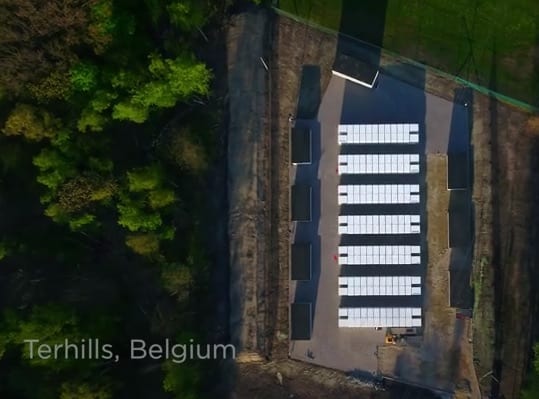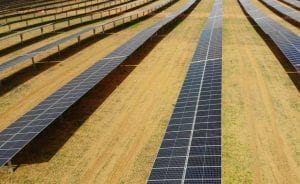Tesla has unveiled its latest large-scale battery project, this time in Europe, where an 18.2MW collection of 140 Powerpacks and inverters has been connected to the grid in Terhills, Belgium
140 Tesla Powerpacks now live in Belgium and balancing the European electrical grid 100 times faster than fossil fuel plants pic.twitter.com/f8XzCYgrJZ
— Tesla (@Tesla) May 14, 2018
The project – which Tesla says took six months to complete from inception to operation, with the battery installation itself taking about five weeks – was unveiled on Tuesday afternoon (Australian time) by the California based company via its various social media channels.
According to ReNews, the €11 million storage array, located at the Terhills resort, is pooled with a mix of demand response assets from industrial and commercial consumers, and is one of the largest batteries in Europe contributing to the grid.
While a fraction of the size of the 100MW Hornsdale Power Reserve “big battery” in South Australia, the Belgian battery bank will be used for similar “grid balancing” purposes on the European grid – as the video below explains.
It will combine with various demand response services to provide around 32MW of grid capacity. The number of Powerwalls – 140 – suggests storage capacity of 28MWh, but this will depend on the final configuration.
If it’s anywhere near as effective as its SA counterpart, it should do a pretty good job.
As RenewEconomy reported on Friday, new data from McKinsey and Co – presented at Australian Energy Week – shows that the Hornsdale Power Reserve has taken a 55 per cent share in the state’s frequency and ancillary services market, and lowered prices in that market by 90 per cent, since being switched on.
Meanwhile, in Australia, work has begun on the Bulgana Renewable Energy Hub in Victoria which will see the state’s first combine wind farm and battery storage, including a 20MW/34MWh Tesla battery.
Tesla is also working on another large-scale battery storage project – the Gannawarra Energy Storage System, which will add a 25MW/50MWh Powerpack battery system to Victoria’s biggest solar farm, the 50MW Ganawarra project in the state’s north-west.
And earlier this month, Tesla CEO and chief visionary Elon Musk let slip about a soon-to-be announced new big battery project that would dwarf the SA installation.
Musk said the new project would be announced within a few months – he did not say where it will be installed – and that at 1GWh it would would be eight times bigger than Hornsdale.
“The utilities have really loved the battery pack. I feel confident that we will be able to announce a deal at the gigawatt hour scale within a matter of months,” Musk told a conference call following the release of the company’s March quarter results.









